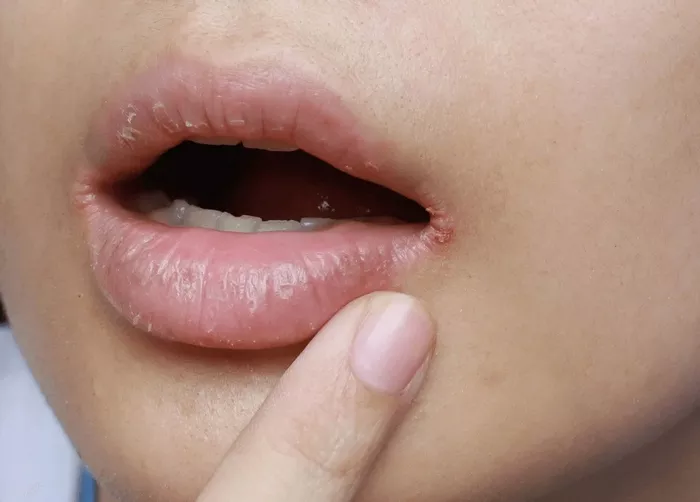Angular cheilitis is a common yet often misunderstood condition affecting the corners of the mouth. Characterized by inflammation, cracking, redness, and sometimes painful sores, this condition can cause significant discomfort and impact daily activities such as eating and speaking. This article provides a comprehensive overview of angular cheilitis, exploring its causes, symptoms, diagnosis, treatment options, and prevention tips to promote overall dental health.
What is Angular Cheilitis?
Angular cheilitis, also called perleche, is an inflammatory condition localized at the angles or corners of the lips. It manifests as fissures or cracks that can become red, swollen, and sore. This condition can occur at any age and affects both men and women. It is important to recognize the condition early to prevent secondary infections and chronic discomfort.
Causes of Angular Cheilitis
Angular cheilitis has a multifactorial origin. It often results from a combination of factors that create a favorable environment for infection or irritation at the mouth corners. The primary causes include:
1. Fungal and Bacterial Infections
The most common microbial agents involved are Candida albicans (a type of yeast) and Staphylococcus aureus bacteria. These organisms thrive in moist, warm environments, such as the folds of skin at the mouth corners, especially when saliva accumulates due to lip licking or drooling.
2. Saliva Accumulation and Moisture
Excessive saliva pooling at the mouth corners can soften the skin, leading to cracks and fissures. This is common in individuals with habits like frequent lip licking, thumb sucking, or those with poorly fitting dentures, which create creases that trap moisture.
3. Nutritional Deficiencies
Deficiencies in certain vitamins and minerals, particularly iron, vitamin B2 (riboflavin), vitamin B3 (niacin), vitamin B6 (pyridoxine), and zinc, have been linked to angular cheilitis. These nutrients are essential for maintaining healthy skin and mucous membranes.
4. Mechanical Factors and Skin Conditions
Excessive skin folding, drooling during sleep, ill-fitting dentures, or braces can cause mechanical irritation. Additionally, dermatological conditions such as eczema or psoriasis may increase susceptibility.
5. Systemic Conditions
Underlying health issues like diabetes mellitus, immunodeficiency, or anemia can predispose individuals to angular cheilitis by impairing immune response or affecting skin integrity.
Symptoms of Angular Cheilitis
The hallmark symptoms of angular cheilitis include:
Redness and inflammation at one or both corners of the mouth
Cracks or fissures that may bleed or crust over
Pain or burning sensation, especially when opening the mouth, eating, or speaking
Itching or discomfort around the affected area
Occasionally, secondary infections can lead to yellowish crusts or pus formation
Treatment Options for Angular Cheilitis
Effective treatment depends on addressing the underlying causes and controlling infection. Common strategies include:
1. Antifungal and Antibacterial Therapy
If fungal infection is confirmed or suspected, topical antifungal creams such as clotrimazole or miconazole are prescribed. For bacterial infections, topical or systemic antibiotics may be necessary.
2. Protecting and Moisturizing the Affected Area
Applying barrier ointments or emollients helps reduce moisture and protect cracked skin. Petroleum jelly or zinc oxide creams are often recommended to soothe and shield the lips from further irritation.
3. Correcting Mechanical Factors
Adjusting ill-fitting dentures or orthodontic devices can reduce saliva pooling. Patients are advised to avoid lip licking or habits that exacerbate the condition.
4. Nutritional Supplementation
Addressing any identified vitamin or mineral deficiencies through diet or supplements can promote healing and prevent recurrence.
5. Managing Underlying Medical Conditions
Optimal control of systemic conditions like diabetes is essential to reduce the risk and severity of angular cheilitis.
Prevention of Angular Cheilitis
Preventive measures focus on maintaining good dental care and avoiding factors that contribute to moisture and irritation at the mouth corners:
- Maintain proper oral hygiene and regular dental checkups
- Avoid excessive lip licking or biting
- Ensure dentures and orthodontic appliances fit properly
- Keep lips moisturized with non-irritating balms
- Eat a balanced diet rich in essential vitamins and minerals
- Manage systemic health conditions effectively
Conclusion
Angular cheilitis is a multifactorial condition that affects the corners of the mouth and can cause discomfort and aesthetic concerns. Understanding its causes—from microbial infections to nutritional deficiencies and mechanical irritation—is essential for effective management and prevention. Maintaining good dental health and seeking timely care can help minimize the impact of this condition and support overall oral wellness.
Related topics

